fallstern
Member
- Joined
- Jul 13, 2010
- Messages
- 19
- Reaction score
- 37
Hello everyone.
I would like to share with you on the next couple of screens my expedition to the former Textilana weaving industry on the north of Bohemia, in Reichenberg (Liberec), Czech Republic.
This particular building is the only one left standing of a colossal complex of weaving, dying and packaging facilities, mainly because of its historical value, which somehow seems questionable given the state the building is in. In Reichenberg, it is known as The Textilana or Blaupunkt (the German Blaupunkt holding used to manufacture radar parts for German submarines here during WWII. Nowadays, the holding mostly produces electric shaving machines). Formerly, Textilana was a magnificent edifice, founded by Theodor von Liebieg, a German enterpreneur who accumulated massive wealth by the means of producing cloth, linen and similar merchandise in the northern regions of Bohemia (then largely German) and southern Germany. Founded in the middle1800s, the factory was later inherited by his son Johann and in 1948 confiscated by the communist regime and renamed Textilana.
Textilana became bankrupt around 2002 and most of the main factory compound in the very centre of Reichenberg was demolished. What remains... is recorded here. The building is currently empty and devoid of any traces of activity except the occasional worker (demolition? construction? I have no clue) and the few token airsofters, sprayers and hobos.
I have been planning this expedition for three or so years. A major reorganization of my life's priorities led me to commence the exploration now.
So, here the journey begins. Walking a mile or so from the pulsating heart of Reichenberg, we enter the scar on the city's face, Textilana. This is how the building looks like from the outside. Even though the size may look deceptive, it really is huge and, so to say, punches you in the eye if you see it for the first time.

One more outside shot. Notice the ornaments between the windows and the PUNK inscription in top left corner. The place has been abandoned for over 8 years now and the local sprayer community obviously noticed. (My apologies, might have overblown the colours in PS here a little bit)...
¨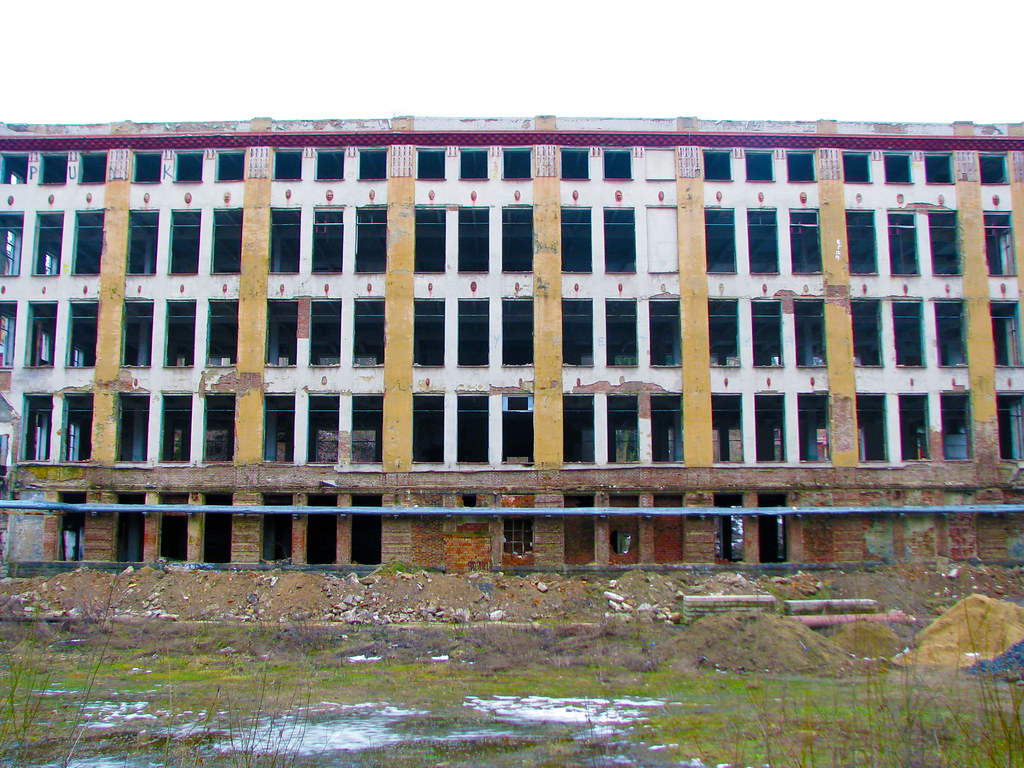
This house is clearly visible right above the main factory complex. It is a part of the so-called Liebiegstadt, a whole quarter of Reichenberg built by Theodor von Liebieg for the factory workers. This house seems to be owned and inhabited by somebody. Adds nicely to the atmosphere.
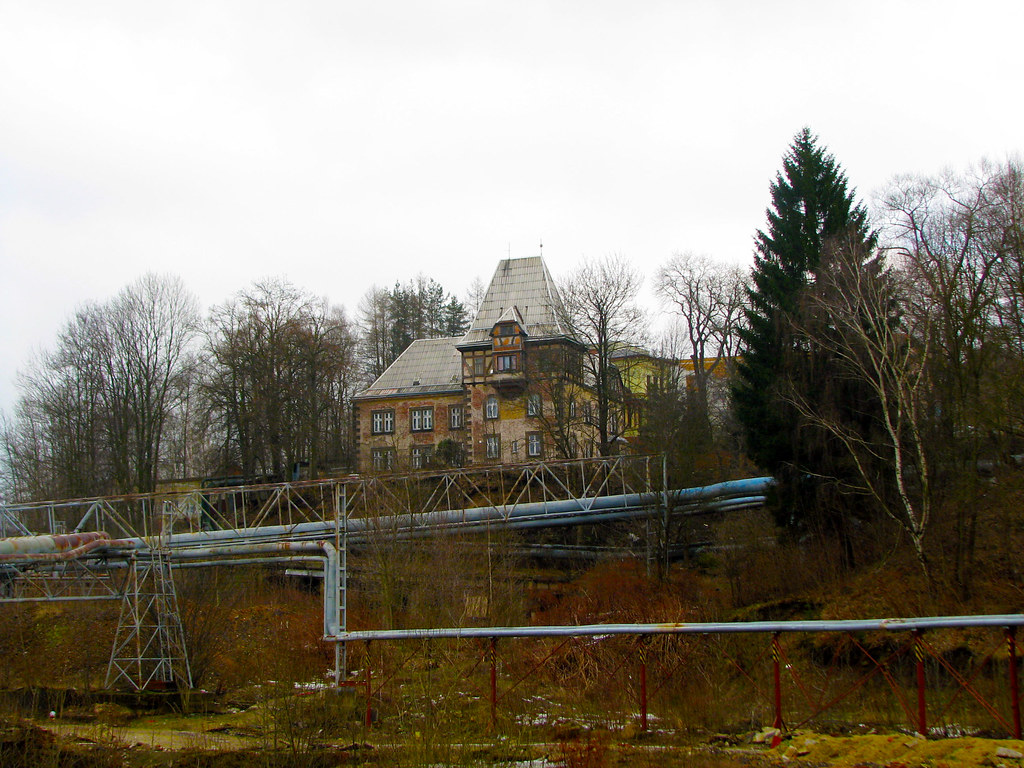
Another outside shot, this time depicting the entrance to Blaupunkt itself.
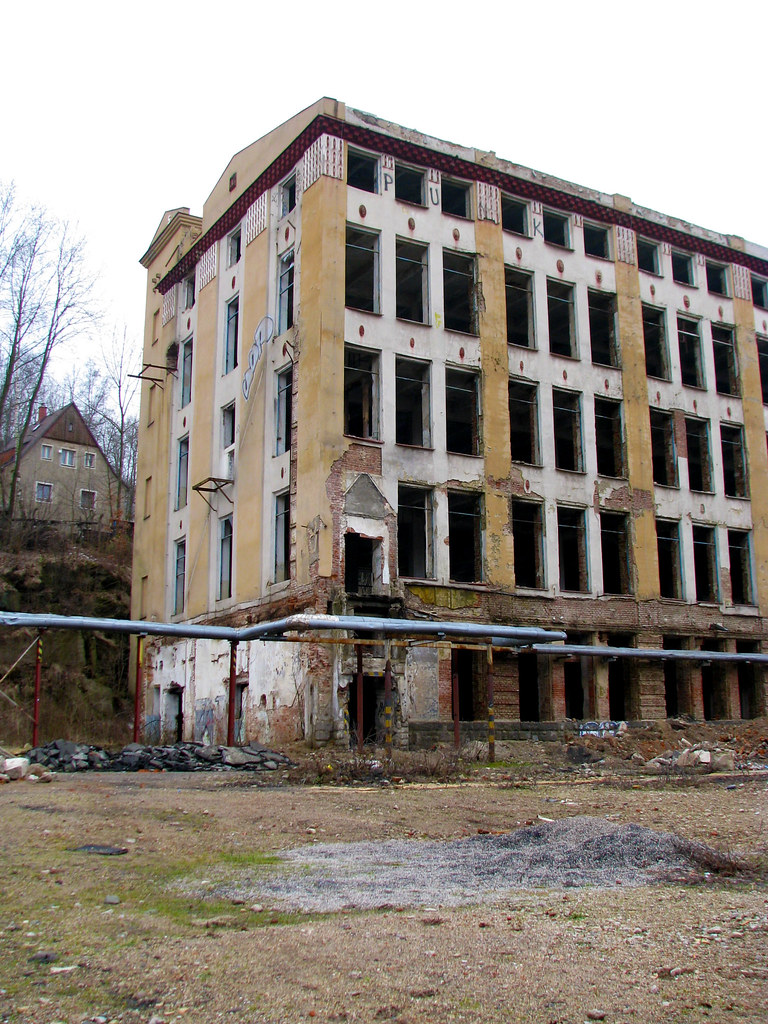
And another one. Just thought this angle was nicer. Please note that the pipes are still functional, I believe they lead heat or gas... somewhere.
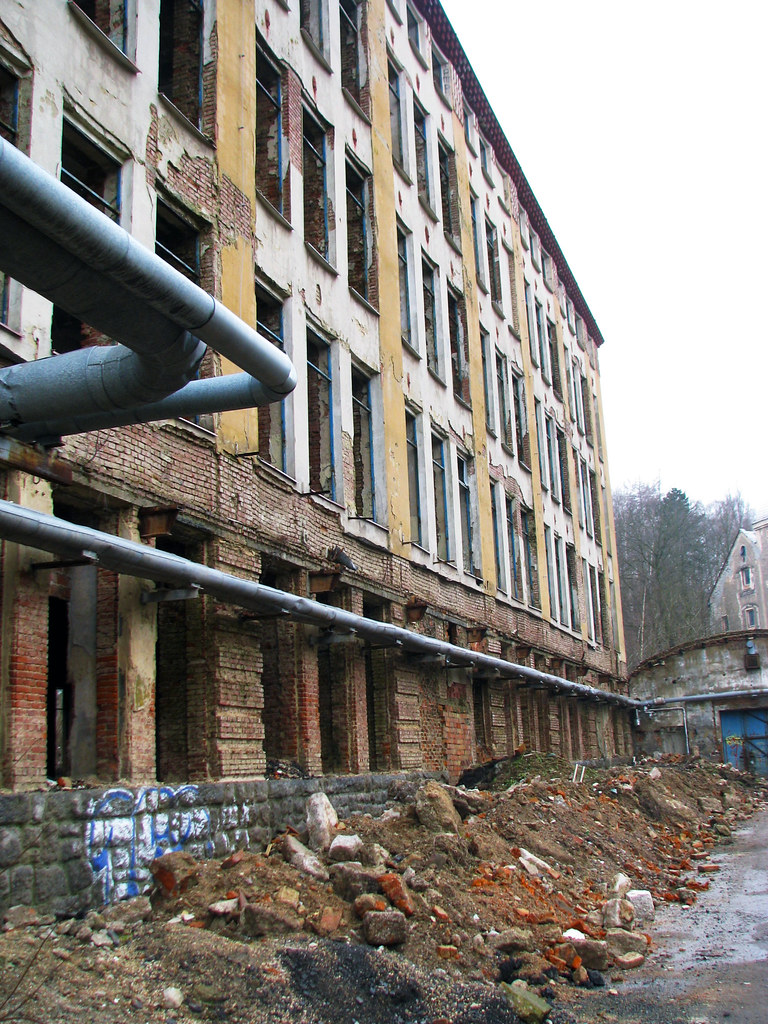
"Abandon all hope..." Yeah, whatever. If you don't want to enter through here, you might as well use the massive hole in the wall just around the corner.
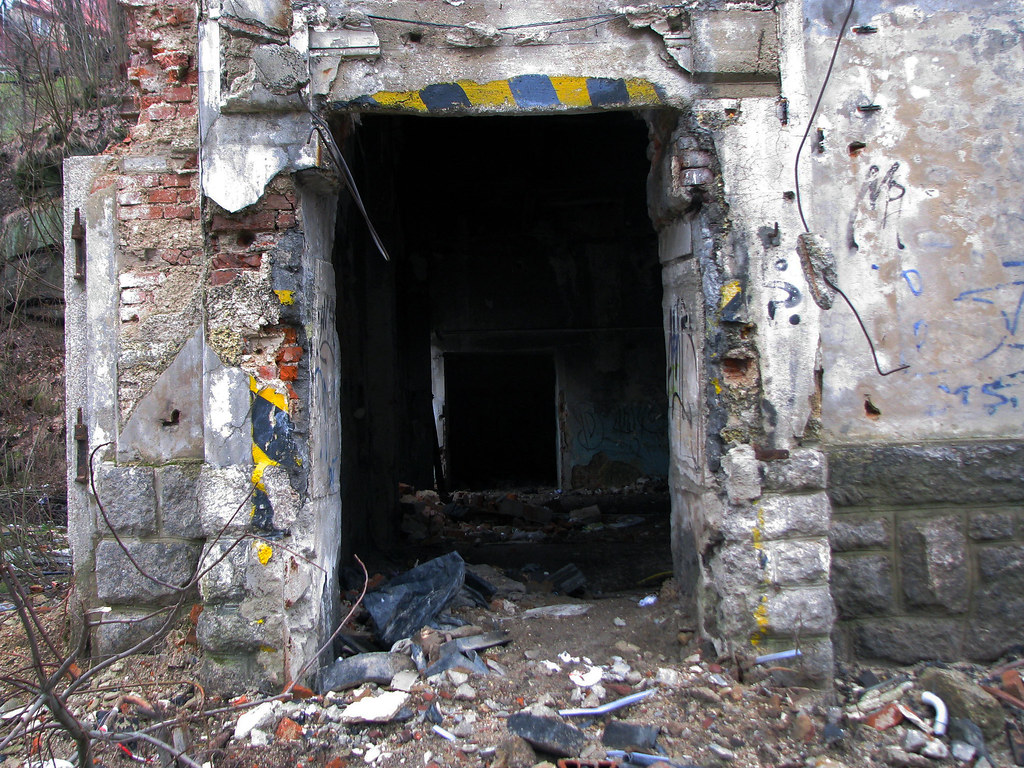
And here we go, the gorund floor. Ironically, this one is almost the messiest one. There seems to be some construction / demolition work underway, but I have no clue of its exact nature. Anyway, almost all of the ground floor's windows are blinded by bricks, so there is very little light here.
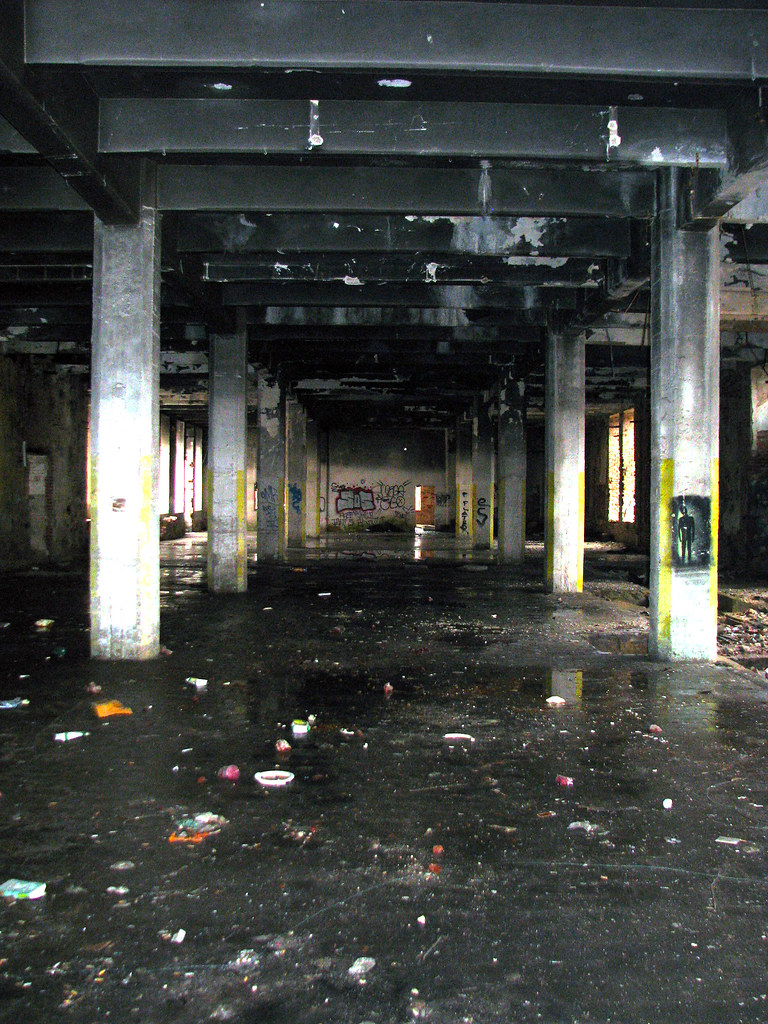
The elevator shaft. When I last visited Textilana, around 2 years ago, the torso of the lift was still there. I assume some of our less fortunate compatriots had disassembled and sold it.
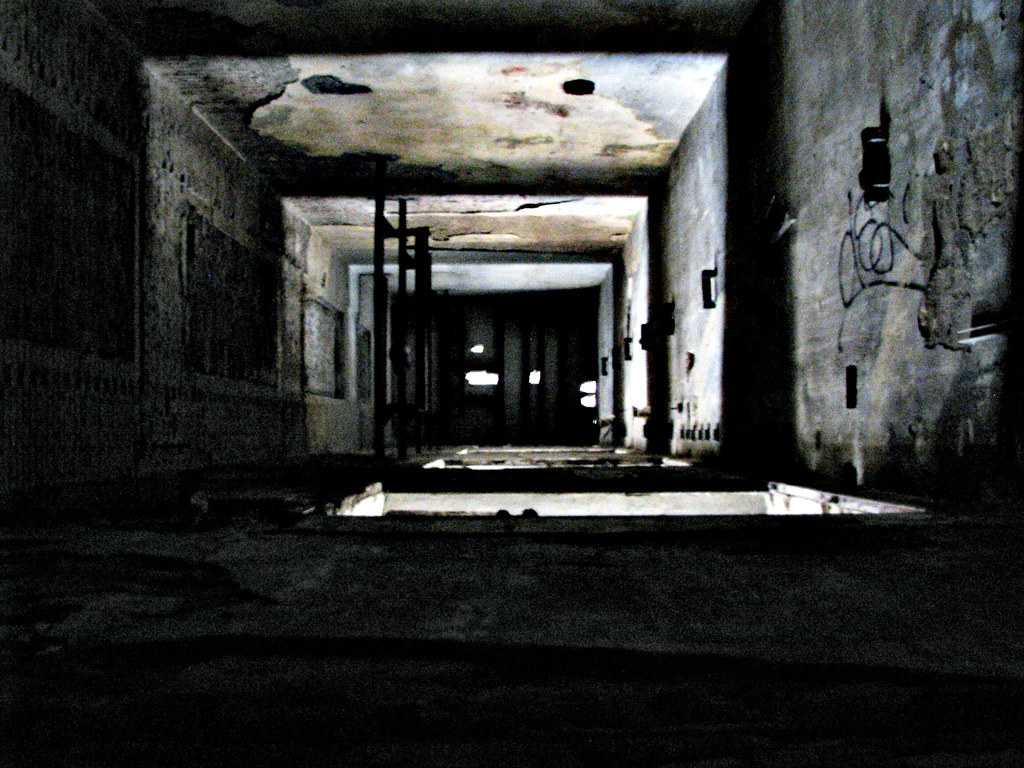
With the elevator gone, we have to use the stairs. The stairwell is massive and best viewed from above, as we will see later on.
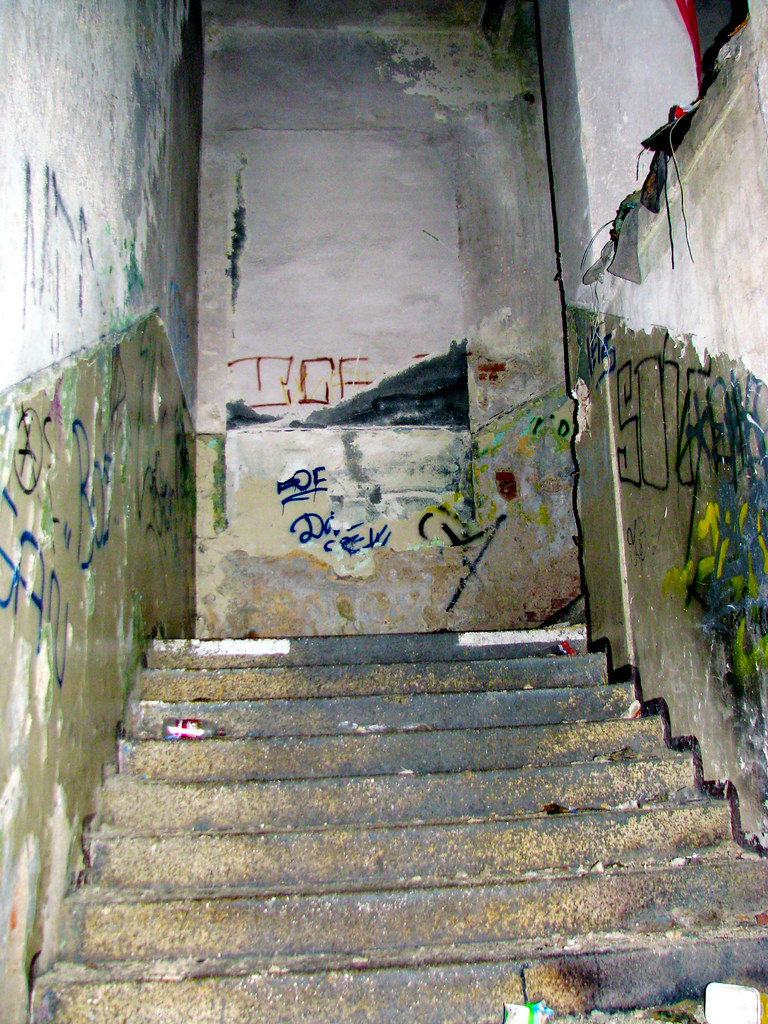
This photo shows how the building was customized and rebuilt over the years. This, obviously, was some sort of a storage chamber or cellar, but before that, there used to be a door which got bricked up later.

I just love how the moss and the lichen are always the first visible lifeforms to take buildings over from human beings. Don't you?
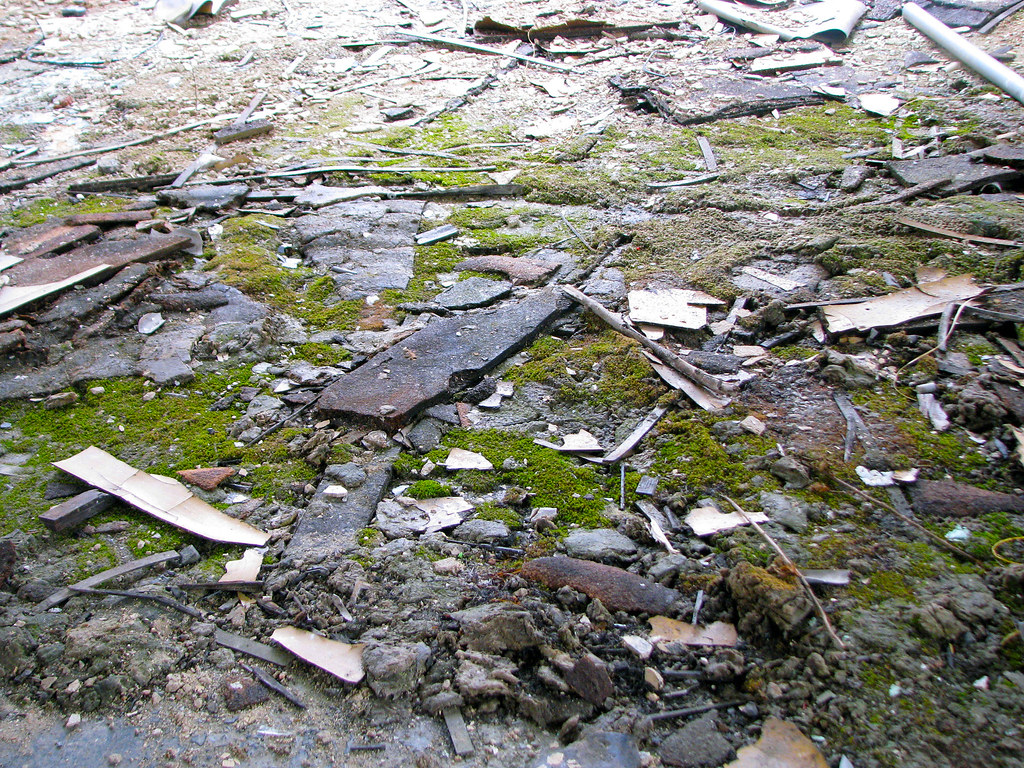
2nd floor hallway. It seems the remnants of the thin plaster wall visible in the top part of the picture are of a newer date than the solid brick and concrete rest of the building.
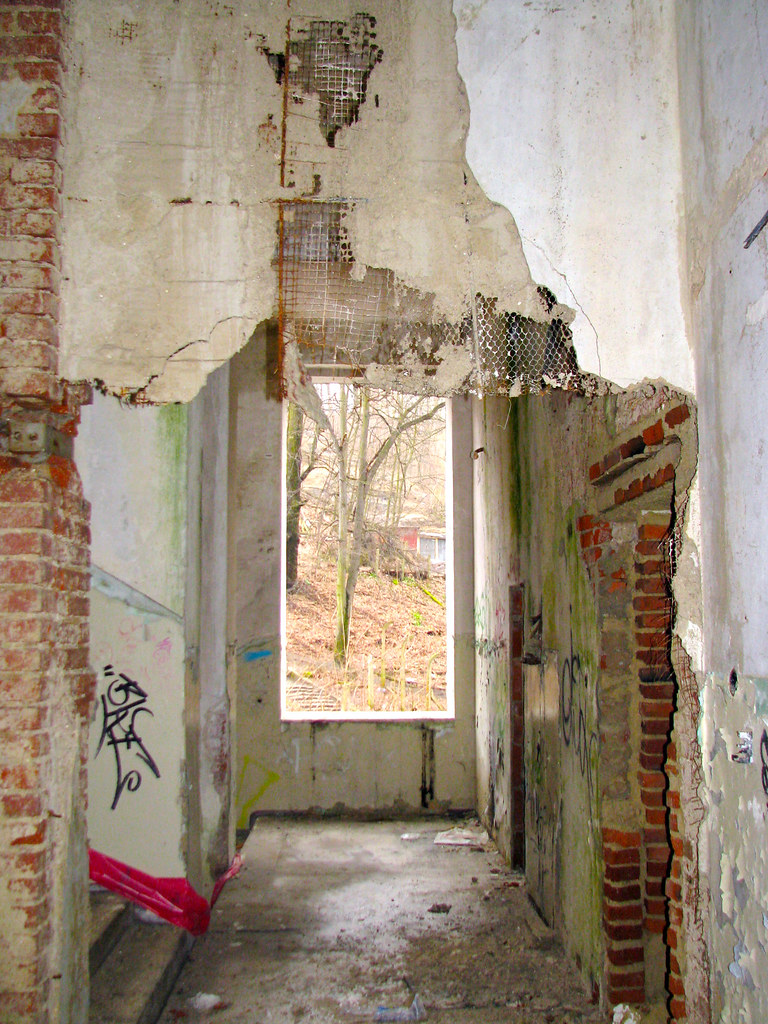
This is about as magnificent as the interior gets. 1st floor main hall. Just imagine, this whole space used to be full of workers, machines, smells, sounds and feelings... well, not anymore.
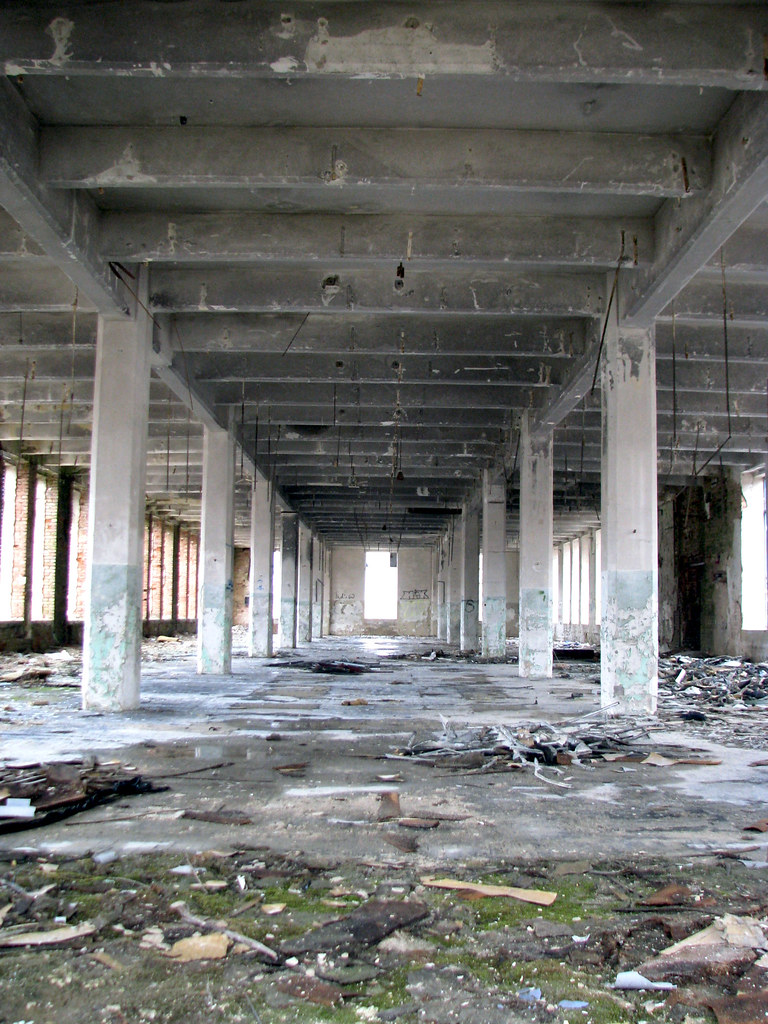
Another shot of the stairwell, this time from the 1st to the 2nd floor. See the signs of recent inhabitants?
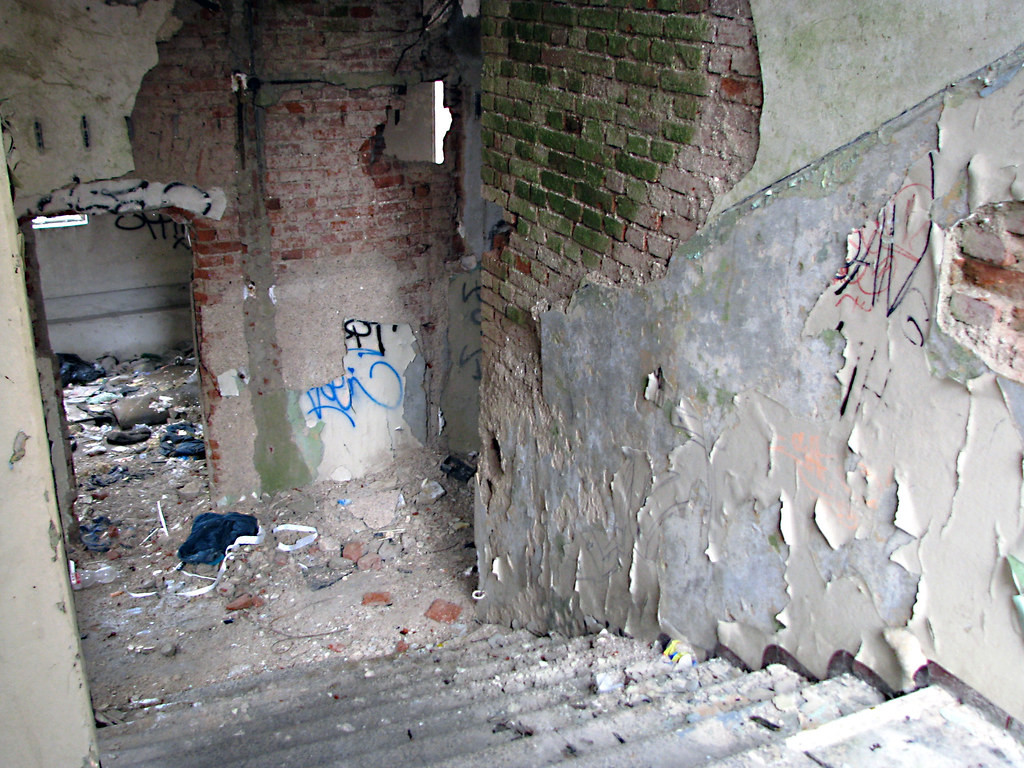
2nd floor main hall. The mess in the front seems to be either a random pile of garbage or the nest of a local hobo.
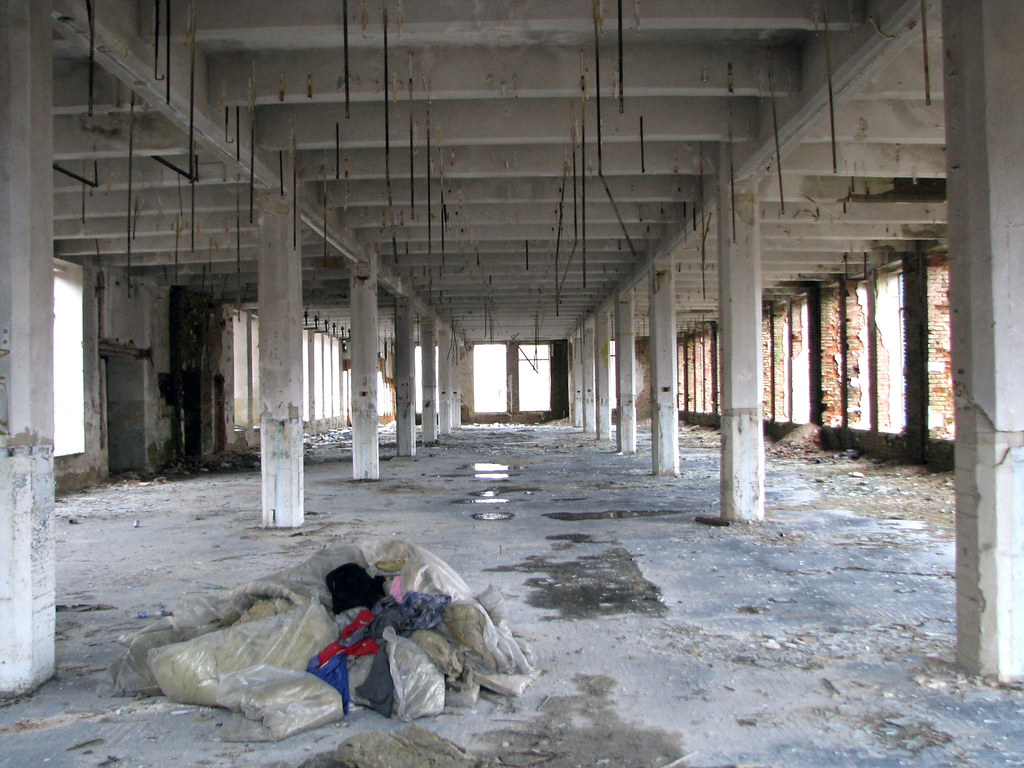
Notausgang. Unbelievable as that may be, this inscription seems to come from the early 1900s. Given that it is written in German, which the commies would probably not tolerate... In German, this means "emergency exit". Simple enough, unless....
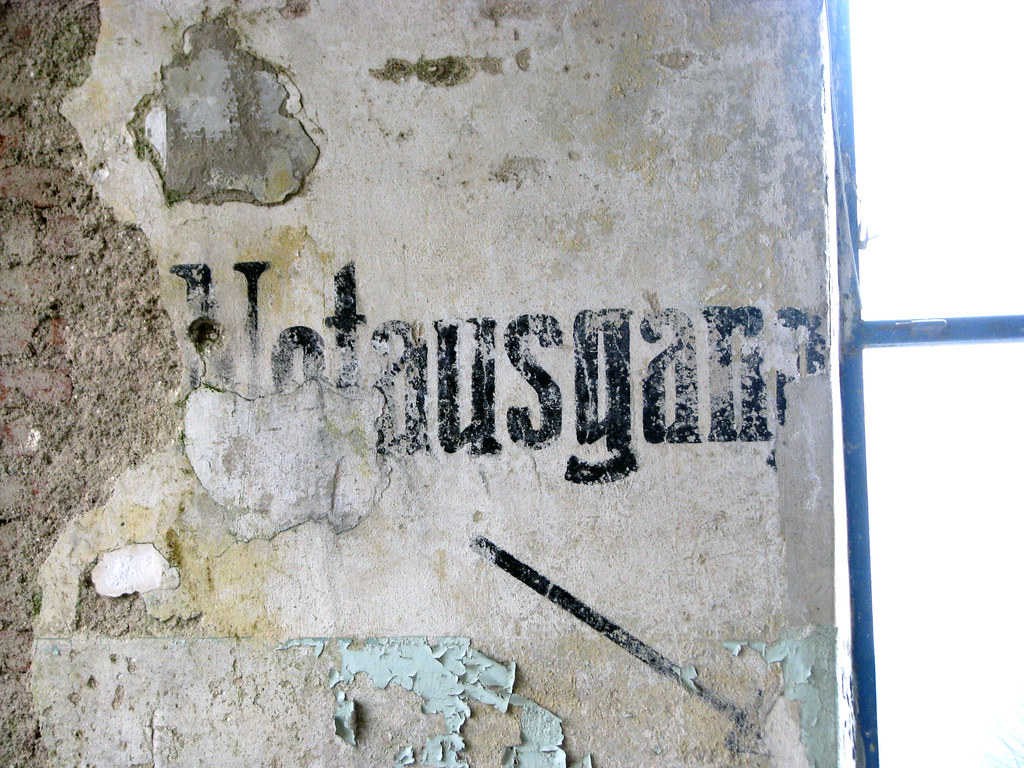
... the arrow points straight out of the window! There used to be rusty emergency stairs leading down to the ground until 2 - 3 years ago. It has probably crumbled into dust. Or maybe the construction / demolition workers had disassembled it.
The arrow has become a popular target of "funny" remarks by the aforementioned sprayer community. I found the remarks unworthy of memory card space.
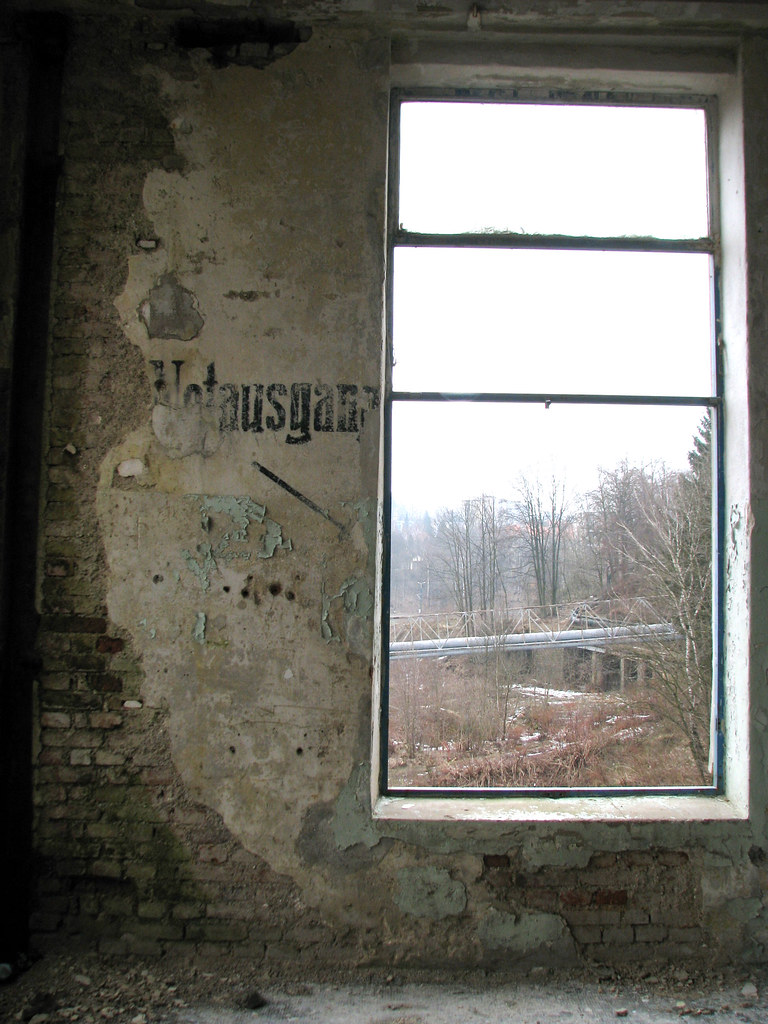
Another hall, 3rd floor this time. Somebody actually made the effort to tidy it up a bit. Or maybe nobody made the effort to bring the mess all the way up here.
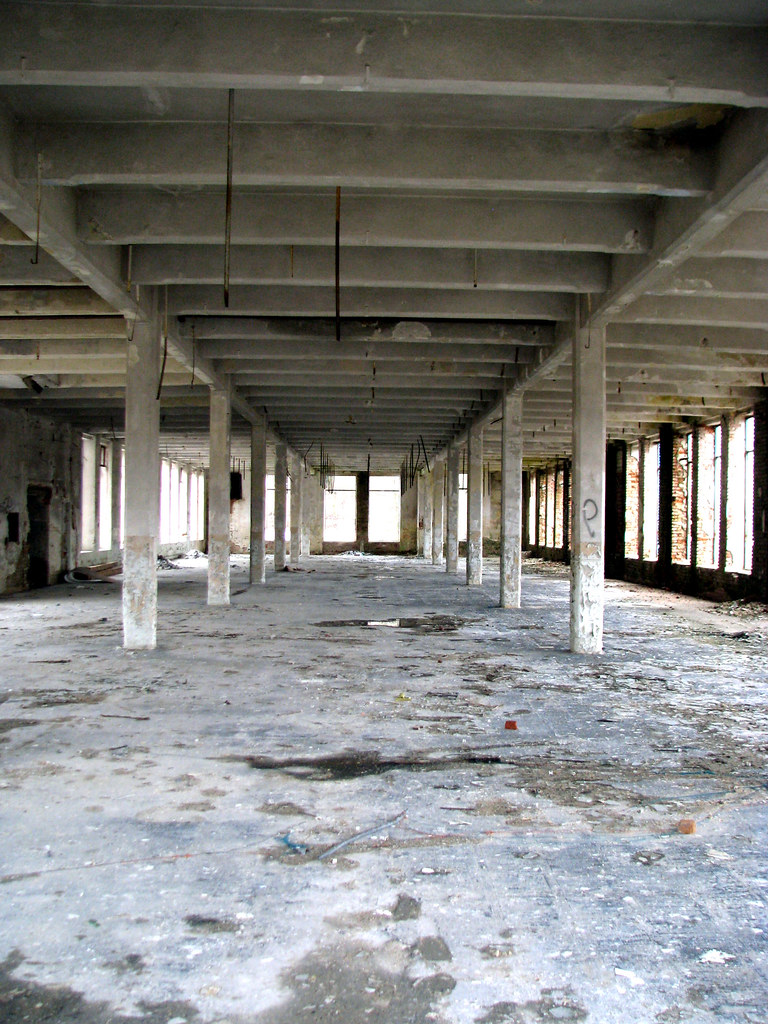
Somebody made themselves quite a comfortable room in here. Probably another one of the local hobos.
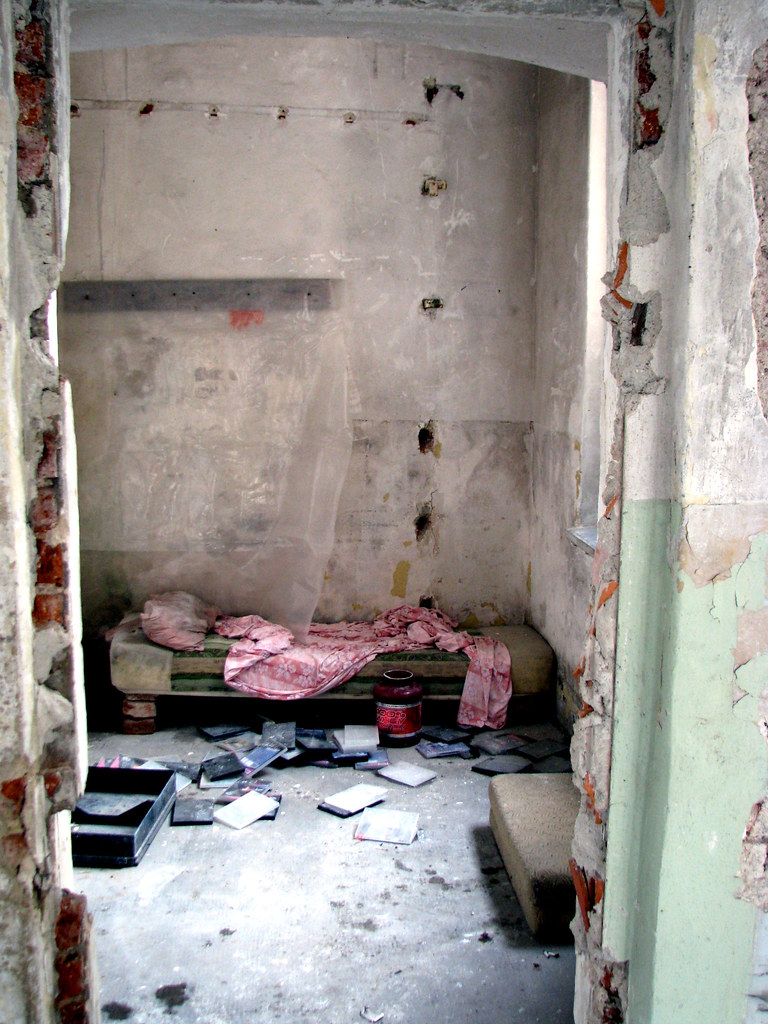
Believe it or not, this is what you see through the windows. A major housing area with commie-era houses and a busy main street. Right in front of a run-down factory. That's how it is in this country.
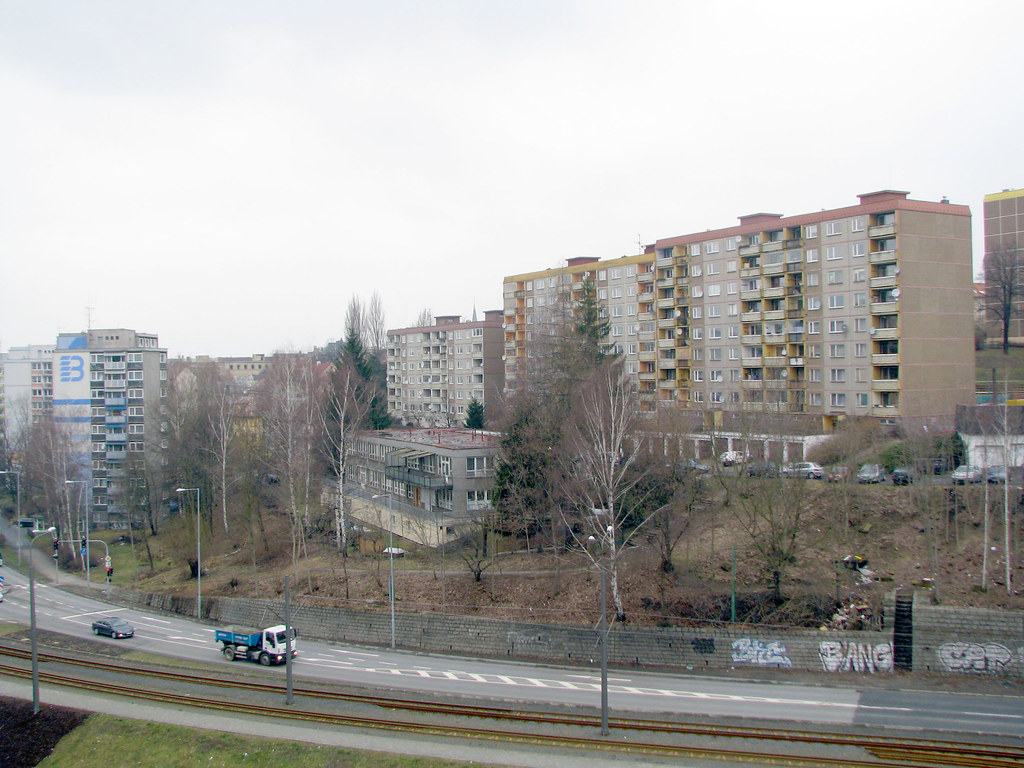
This is an empty plain. It wasn't always like this. This entire void used to be covered with factory buildings, buzzing with workers and trains. Well, not anymore. Another house of the Liebiegstadt is visible in the center of the picture (the yellow one).
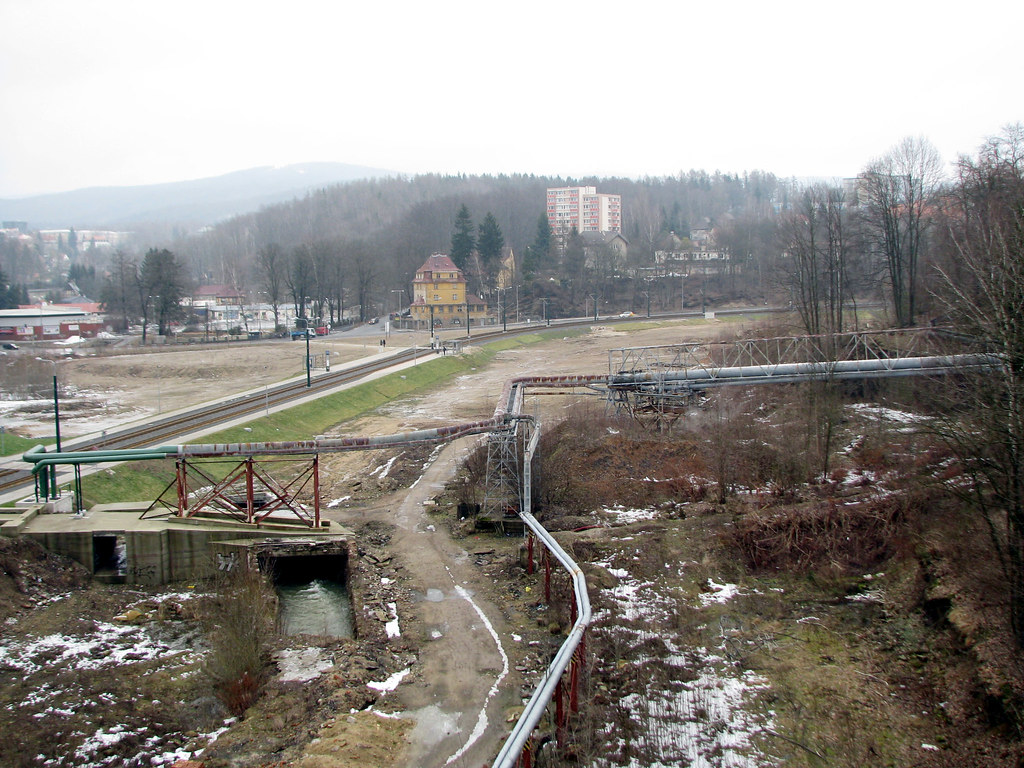
4th floor hall. This one is obviously much less spacious than the previous three. There used to be a wooden ladder for roof access, but either someone stole it or it had rotten to dust.
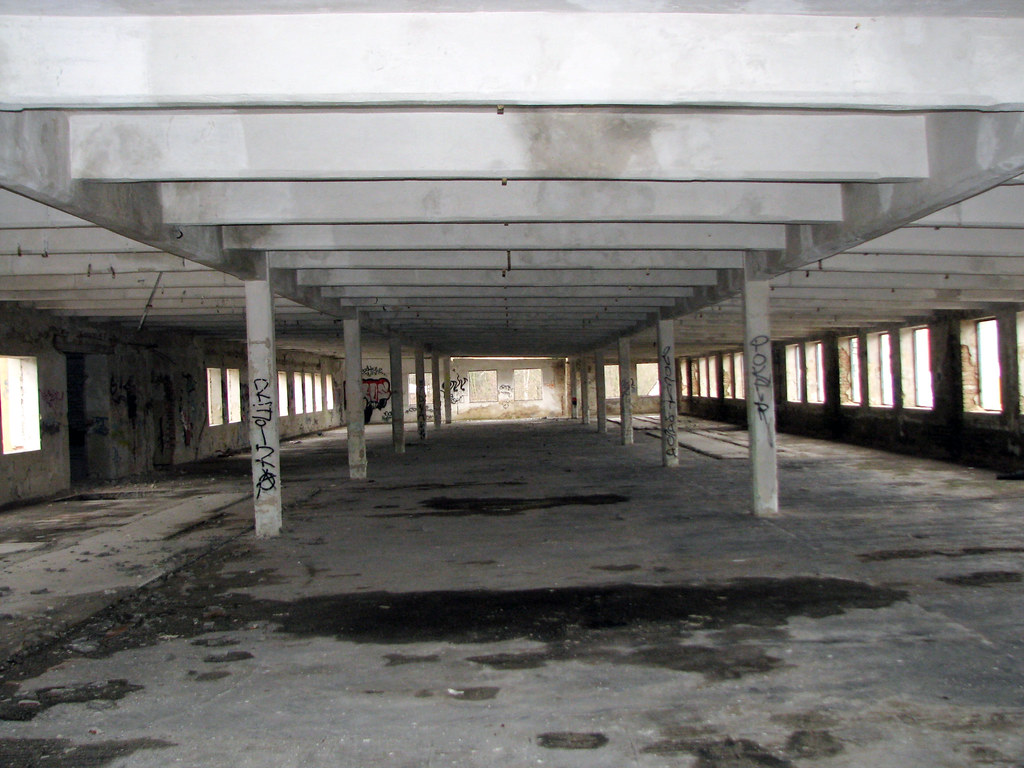
The stairwell viewed from above, as I promised earlier. The shot sucks, but given that I suffer from extreme nausea, this was quite an act of heroism.

The stairs once more, this time with more local sprayer "art"...

One more shot of the 3rd floor hall...
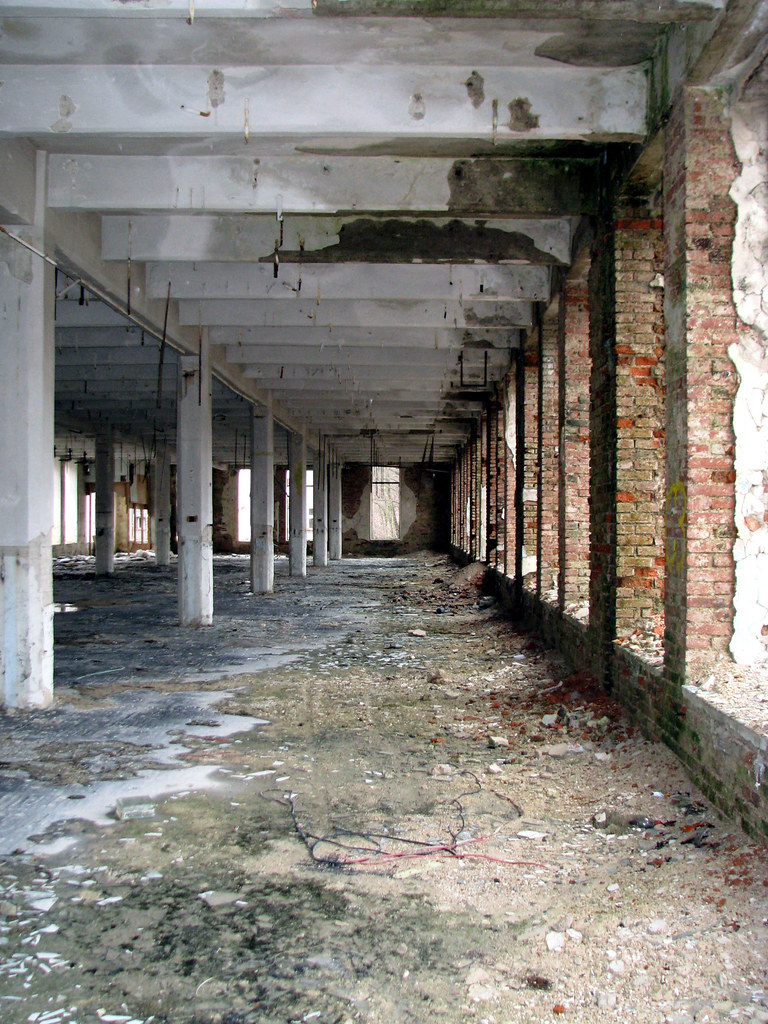
And the bathrooms. There is a set of bathrooms (male / female) on each floor except ground floor, but the hobos don't seem to give a damn and take them all as unisex. That goes for the elevator shaft as well.
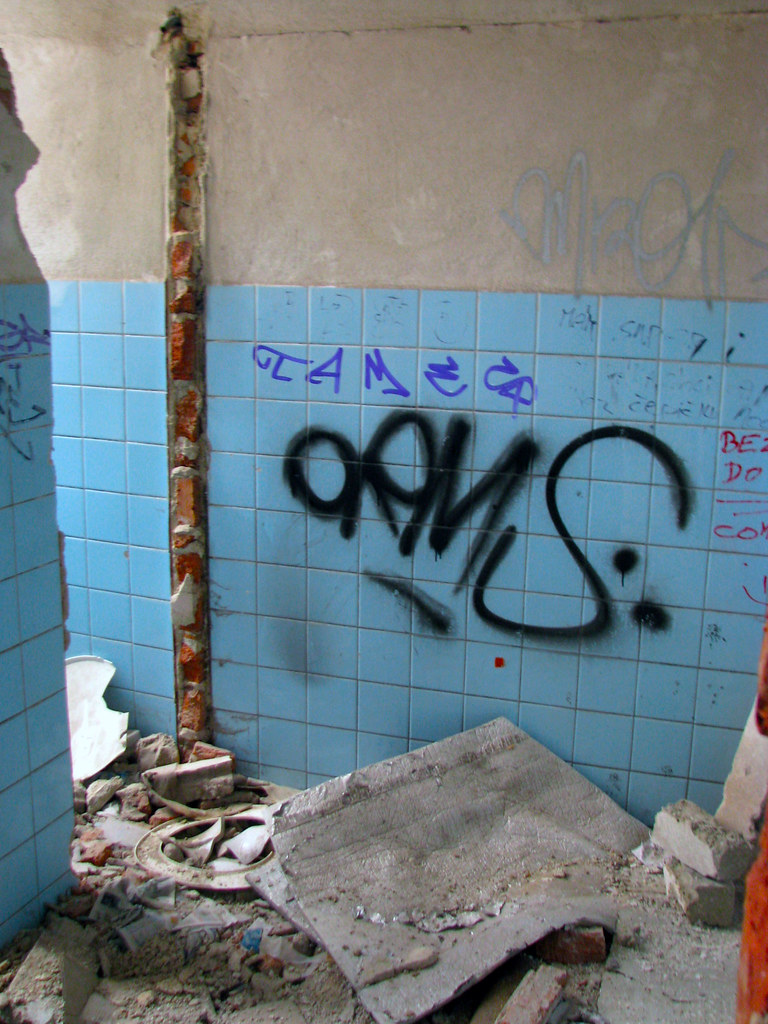
Coming out of the building, this caught my attention. This door leads out of the factory complex. Kinda useless now.
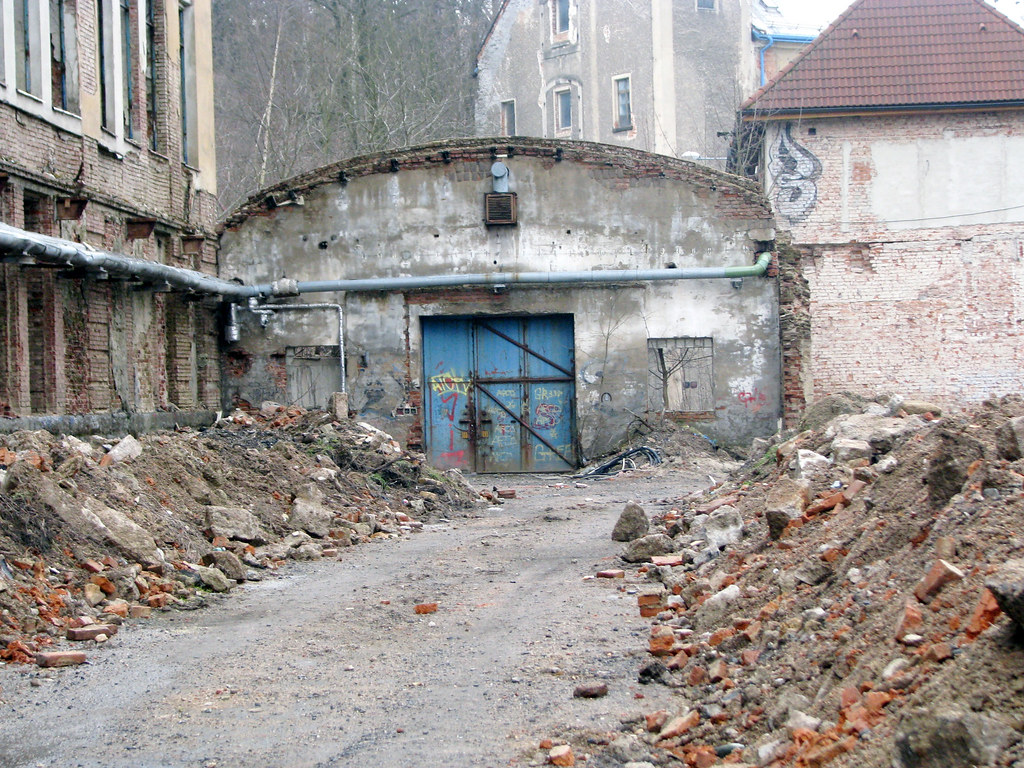
And a little bonus for those who kept with me until now. This hole is some 2 meters from the main entrance. The thing down there is an actual friggin river. Yes. It is the river Nisa covered with crumbling concrete. One day, somebody is going to fall down there... let's hope not.

Well, that's it for Textilana.
Thank you, dear reader, for your attention and see you next time.
I would like to share with you on the next couple of screens my expedition to the former Textilana weaving industry on the north of Bohemia, in Reichenberg (Liberec), Czech Republic.
This particular building is the only one left standing of a colossal complex of weaving, dying and packaging facilities, mainly because of its historical value, which somehow seems questionable given the state the building is in. In Reichenberg, it is known as The Textilana or Blaupunkt (the German Blaupunkt holding used to manufacture radar parts for German submarines here during WWII. Nowadays, the holding mostly produces electric shaving machines). Formerly, Textilana was a magnificent edifice, founded by Theodor von Liebieg, a German enterpreneur who accumulated massive wealth by the means of producing cloth, linen and similar merchandise in the northern regions of Bohemia (then largely German) and southern Germany. Founded in the middle1800s, the factory was later inherited by his son Johann and in 1948 confiscated by the communist regime and renamed Textilana.
Textilana became bankrupt around 2002 and most of the main factory compound in the very centre of Reichenberg was demolished. What remains... is recorded here. The building is currently empty and devoid of any traces of activity except the occasional worker (demolition? construction? I have no clue) and the few token airsofters, sprayers and hobos.
I have been planning this expedition for three or so years. A major reorganization of my life's priorities led me to commence the exploration now.
So, here the journey begins. Walking a mile or so from the pulsating heart of Reichenberg, we enter the scar on the city's face, Textilana. This is how the building looks like from the outside. Even though the size may look deceptive, it really is huge and, so to say, punches you in the eye if you see it for the first time.

One more outside shot. Notice the ornaments between the windows and the PUNK inscription in top left corner. The place has been abandoned for over 8 years now and the local sprayer community obviously noticed. (My apologies, might have overblown the colours in PS here a little bit)...
¨

This house is clearly visible right above the main factory complex. It is a part of the so-called Liebiegstadt, a whole quarter of Reichenberg built by Theodor von Liebieg for the factory workers. This house seems to be owned and inhabited by somebody. Adds nicely to the atmosphere.

Another outside shot, this time depicting the entrance to Blaupunkt itself.

And another one. Just thought this angle was nicer. Please note that the pipes are still functional, I believe they lead heat or gas... somewhere.

"Abandon all hope..." Yeah, whatever. If you don't want to enter through here, you might as well use the massive hole in the wall just around the corner.

And here we go, the gorund floor. Ironically, this one is almost the messiest one. There seems to be some construction / demolition work underway, but I have no clue of its exact nature. Anyway, almost all of the ground floor's windows are blinded by bricks, so there is very little light here.

The elevator shaft. When I last visited Textilana, around 2 years ago, the torso of the lift was still there. I assume some of our less fortunate compatriots had disassembled and sold it.

With the elevator gone, we have to use the stairs. The stairwell is massive and best viewed from above, as we will see later on.

This photo shows how the building was customized and rebuilt over the years. This, obviously, was some sort of a storage chamber or cellar, but before that, there used to be a door which got bricked up later.

I just love how the moss and the lichen are always the first visible lifeforms to take buildings over from human beings. Don't you?

2nd floor hallway. It seems the remnants of the thin plaster wall visible in the top part of the picture are of a newer date than the solid brick and concrete rest of the building.

This is about as magnificent as the interior gets. 1st floor main hall. Just imagine, this whole space used to be full of workers, machines, smells, sounds and feelings... well, not anymore.

Another shot of the stairwell, this time from the 1st to the 2nd floor. See the signs of recent inhabitants?

2nd floor main hall. The mess in the front seems to be either a random pile of garbage or the nest of a local hobo.

Notausgang. Unbelievable as that may be, this inscription seems to come from the early 1900s. Given that it is written in German, which the commies would probably not tolerate... In German, this means "emergency exit". Simple enough, unless....

... the arrow points straight out of the window! There used to be rusty emergency stairs leading down to the ground until 2 - 3 years ago. It has probably crumbled into dust. Or maybe the construction / demolition workers had disassembled it.
The arrow has become a popular target of "funny" remarks by the aforementioned sprayer community. I found the remarks unworthy of memory card space.

Another hall, 3rd floor this time. Somebody actually made the effort to tidy it up a bit. Or maybe nobody made the effort to bring the mess all the way up here.

Somebody made themselves quite a comfortable room in here. Probably another one of the local hobos.

Believe it or not, this is what you see through the windows. A major housing area with commie-era houses and a busy main street. Right in front of a run-down factory. That's how it is in this country.

This is an empty plain. It wasn't always like this. This entire void used to be covered with factory buildings, buzzing with workers and trains. Well, not anymore. Another house of the Liebiegstadt is visible in the center of the picture (the yellow one).

4th floor hall. This one is obviously much less spacious than the previous three. There used to be a wooden ladder for roof access, but either someone stole it or it had rotten to dust.

The stairwell viewed from above, as I promised earlier. The shot sucks, but given that I suffer from extreme nausea, this was quite an act of heroism.

The stairs once more, this time with more local sprayer "art"...

One more shot of the 3rd floor hall...

And the bathrooms. There is a set of bathrooms (male / female) on each floor except ground floor, but the hobos don't seem to give a damn and take them all as unisex. That goes for the elevator shaft as well.

Coming out of the building, this caught my attention. This door leads out of the factory complex. Kinda useless now.

And a little bonus for those who kept with me until now. This hole is some 2 meters from the main entrance. The thing down there is an actual friggin river. Yes. It is the river Nisa covered with crumbling concrete. One day, somebody is going to fall down there... let's hope not.

Well, that's it for Textilana.
Thank you, dear reader, for your attention and see you next time.


































